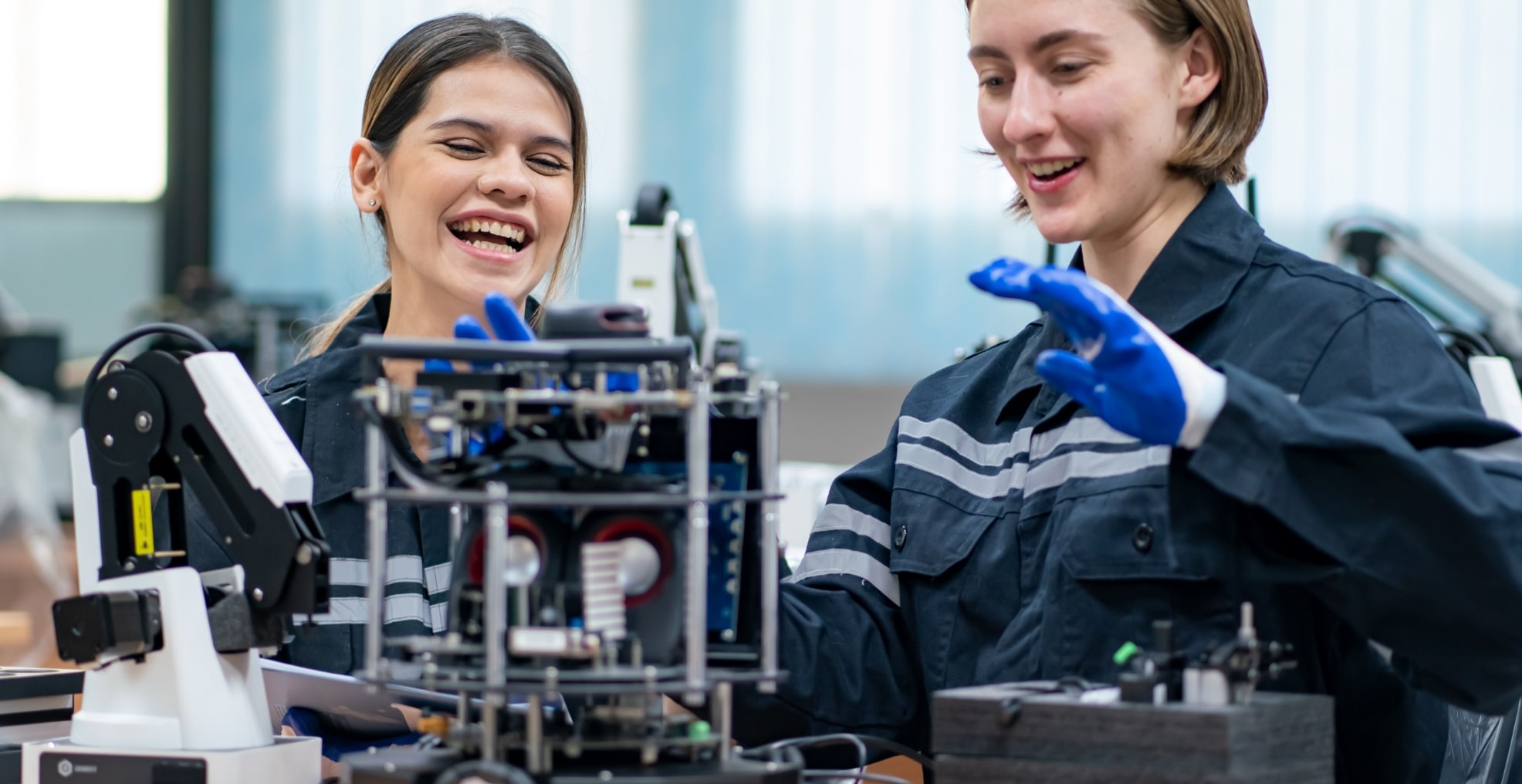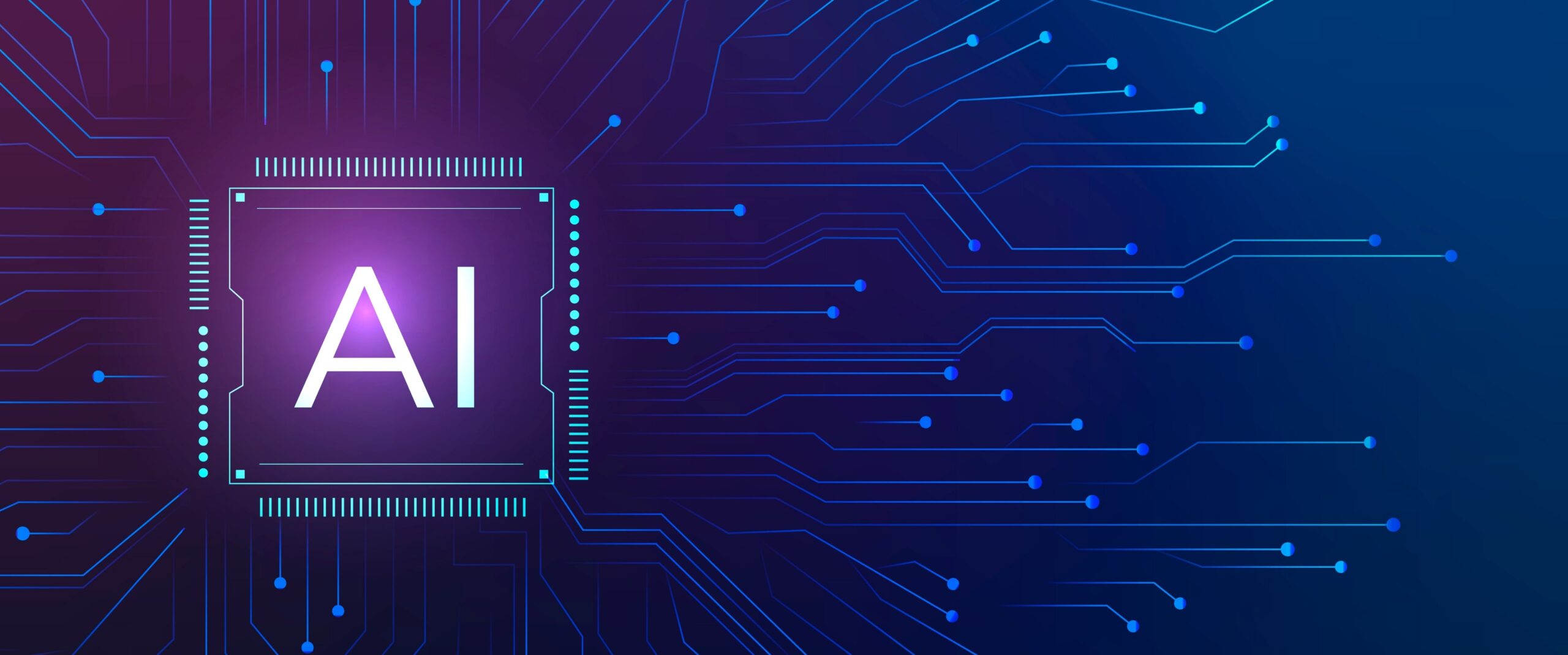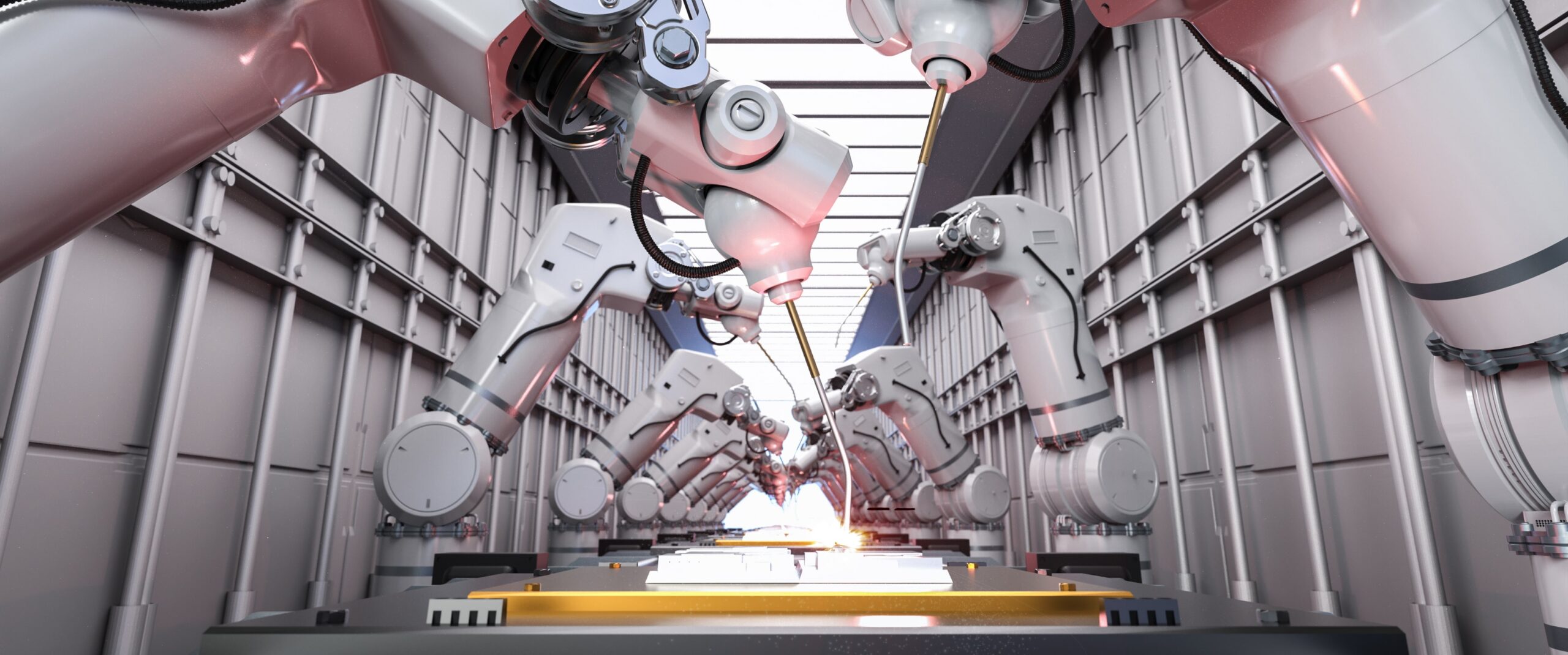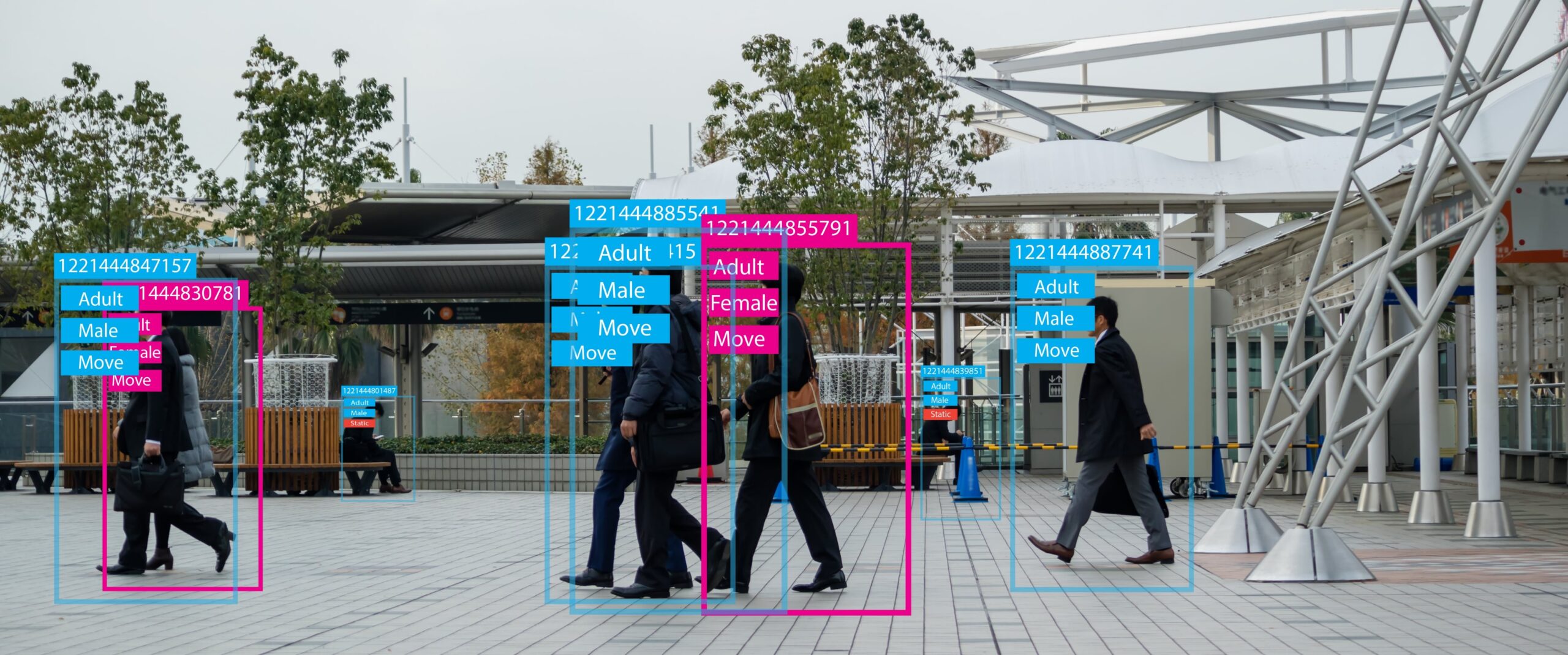Evolution of Visual AI and How Advanced Algorithms are Transforming Industries
Oct 31st. 15 minutes read
In today’s fast-paced tech world, visual AI (Artificial Intelligence) is making huge waves and transforming various industries.
In this blog post, we’ll explore the historical roots of visual AI, advancements in AI algorithms, and how it’s affecting different industries.
We’ll also tackle challenges and ethical concerns, discuss upcoming trends, and look at their impact on the workforce.
What Is Visual AI?
Visual AI, also known as Computer Vision, is a part of artificial intelligence that gives machines the ability to see and understand visual information from the world around them, much like humans do.
The Advancements in Computer Vision

Visual AI is possible because of advanced AI algorithms and technologies.
These advancements paved the way for better accuracy, efficiency, and adaptability in many visual AI applications.
Deep Learning and Convolutional Neural Networks
Deep Learning, a specific type of computer learning, has been a crucial part of the continuous improvement of advanced AI.
Think of it as a toolkit with special tools, and one of those tools is called Convolutional Neural Networks (CNNs). CNNs help teach computers to recognize objects and patterns in images.
Transfer Learning and Pretrained Models
Transfer Learning allows AI models to share knowledge on how to perform different tasks.
Instead of starting from scratch every time, computers build on what they already know, which makes them smarter and faster at new tasks.
Essentially, pretrained models have been fine-tuned for visual AI tasks, making them more efficient.
The Role of Big Data and Improved Hardware
Data and advanced hardware are the driving forces behind the impressive power of advanced AI.
Data offers a treasure trove of images and videos for advanced AI algorithms to learn from.
Improved hardware, including Graphics Processing Units (GPUs), makes it possible to process all this data efficiently.
Top 06 Visual AI Applications Across Industries

Visual AI is incredibly versatile and is transforming various industries. Let’s explore some sectors reaping the benefits of visual AI.
1. Logistics
In logistics, visual AI optimizes supply chains by finding the most efficient delivery routes, reducing fuel consumption and delivery times.
From route planning to warehouse management, it even keeps an eye on product quality during transportation.
2. Retail
Retailers can also say goodbye to inventory guesswork. Advanced AI keeps real-time tabs on stock levels, ensuring products are always available.
Plus, they help prevent theft and fraud by monitoring stores and identifying suspicious activities.
3. Automotive
In the automotive industry, visual AI plays a crucial role in autonomous vehicles and advanced driver assistance systems (ADAS).
It allows self-driving cars to navigate safely by recognizing road signs, pedestrians, and other vehicles.
ADAS features like lane departure warnings and adaptive cruise control rely on advanced AI to enhance driver safety.
Lastly, it analyzes real-time traffic data, helping drivers avoid traffic and find the best routes.
4. Agriculture
Visual AI supports the agriculture sector through precision farming and crop management.
Farmers use advanced AI to monitor crop health and identify issues like nutrient deficiencies and pest infestations. Early detection of pests and diseases is crucial for crop protection.
Additionally, visual AI predicts crop yields, helping farmers plan for optimal harvests.
5. Manufacturing
In manufacturing, visual AI ensures product quality and automates tasks using robots.
It easily identifies defects in products, ensuring high quality and reducing waste.
The robots guided by advanced AI perform tasks with precision, improving efficiency.
Moreover, visual AI enhances supply chain management by optimizing inventory and predicting demand.
Find out how Flexible Vision works.
Some Important Challenges and Ethical Considerations

While visual AI has incredible potential, it has its challenges and ethical concerns.
Data Privacy and Security
In an age where data is king, protecting personal and corporate information is crucial.
Visual AI systems often capture and process images and videos containing sensitive or personally identifiable information.
Data protection measures, such as encryption and access controls, are essential to prevent misuse.
In addition, data breaches can have severe consequences, exposing sensitive data or proprietary information. Organizations must implement strong cybersecurity measures.
This includes secure data storage, vulnerability assessments, and incident response plans.
Bias and Fairness in Advanced AI
Advanced AI algorithms learn from data, and if that data contains biases, these biases will become part of the AI’s decision-making process.
This can result in issues such as biased facial recognition or unfair recommendations.
Organizations must diversify their data sources and conduct bias assessments.
When data predominantly represents one group, the AI may struggle to offer fair outcomes for underrepresented groups.
Ethical guidelines should govern AI decision-making. For example, in complex situations, AI should prioritize safety.
Organizations developing visual AI should establish clear ethical frameworks to guide decision-making.
Legal and Regulatory Frameworks
Following privacy regulations like GDPR and CCPA is crucial.
New rules are also being created specifically for AI to make sure it’s transparent and accountable.
Some organizations have ethics committees that look at AI projects, assess their effects, and offer guidance on ethical issues.
These committees are important for spotting and reducing risks, making sure AI follows ethical rules, and keeping AI projects transparent.
Extending the Horizon with Future Trends in Visual AI

The journey of advanced AI is far from over. Let’s take a peek at some exciting trends.
Explainable AI (XAI) and Interpretability
Explainable AI (XAI) focuses on making AI systems more transparent and interpretable. XAI techniques give insights into how AI models make their decisions, encouraging trust.
Interpretability in visual AI is vital, especially in healthcare. Medical professionals need to understand AI diagnoses and treatment recommendations.
Human-AI Collaboration
Visual AI will continue to work alongside humans, complementing their capabilities.
Human-AI collaboration sees the strengths of both. For instance, in healthcare, advanced AI assists radiologists in detecting abnormalities, and reducing diagnostic errors.
Collaboration between humans and AI is also prominent in creative fields, where visual AI helps artists and designers generate ideas.
Integration with Augmented Reality (AR) and Virtual Reality (VR)
AR and VR are transforming gaming, education, and training. Visual AI enhances object recognition, tracking, and scene understanding in these technologies.
In AR, users get real-time information overlaid on their surroundings. In VR, visual AI makes virtual environments more realistic.
Learn more about our technology that’s designed for today’s industry.
Some Important Impacts on the Workforce
Visual AI can automate repetitive tasks, but it also creates opportunities for reskilling.
Automation of routine tasks might lead to job displacement in some sectors, like manufacturing, but it helps humans focus on higher-level tasks requiring creativity and critical thinking.
Further, AI technologies create opportunities for learning new skills in data science, AI development, and AI ethics.
Bottom Line
Moreover, visual AI is reshaping industries, offering both promise and challenges. As we embrace this evolution, ethical development and responsible utilization must remain priorities.
Contact us for more information on visual AI and how it can benefit your business.
Schedule a demo today.
FAQs
Visual AI, also known as Computer Vision, is a branch of artificial intelligence (AI) that allows computers and machines to understand and interpret visual information from images and videos, much like humans do with their eyes and brains.
Advanced AI algorithms are trained to recognize objects, patterns, and features within images, allowing them to perform tasks like image classification, object detection, facial recognition, and scene analysis.
Visual AI offers great advantages to the retail industry. It enhances customer experiences with features like visual search and personalized product recommendations. It also assists in inventory management, ensuring that stores have the right products in stock at the right time.
One big concern is data privacy, especially when handling sensitive visual data. Organizations must implement data protection measures to protect personal and corporate information. Bias in advanced AI is another issue, as biased training data can lead to unfair outcomes. To address this, organizations should invest in diverse datasets and perform regular bias audits.
Explainable AI (XAI) aims to make AI systems more transparent and interpretable. Human-AI collaboration is expected to grow, where visual AI works alongside humans, complementing their skills and expertise. Integration with Augmented Reality (AR) and Virtual Reality (VR) promises immersive experiences, with visual AI enhancing object recognition and scene understanding in these technologies.
While they can automate repetitive tasks, potentially leading to job displacement in certain industries, they also create opportunities for job transformation and skill development. As advanced AI handles routine and time-consuming tasks, human workers can focus on higher-level responsibilities that require creativity, problem-solving, and critical thinking.

